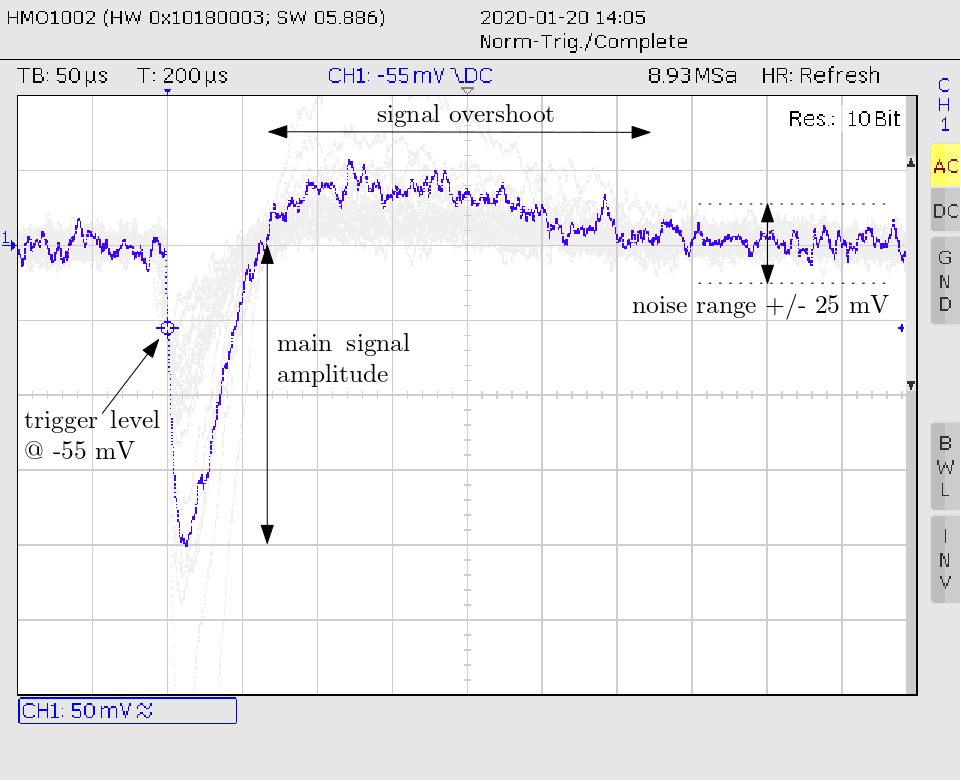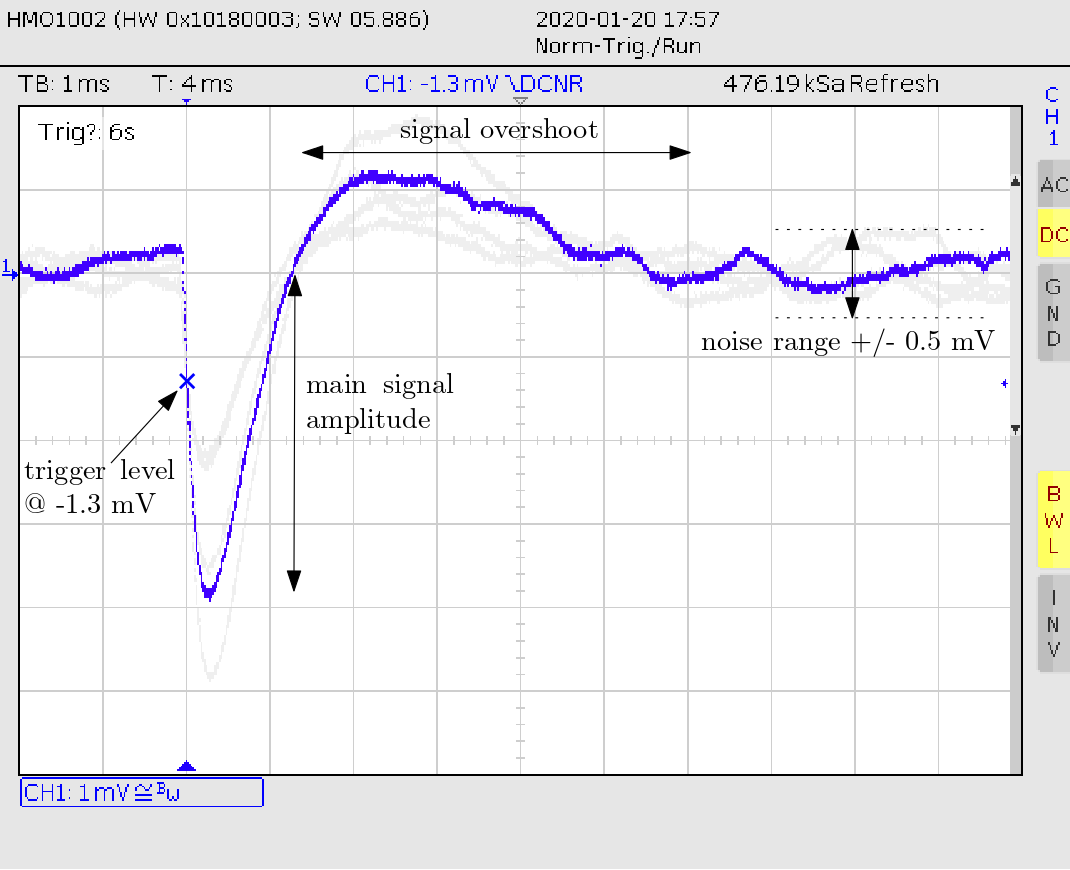6.0 KiB
If the detector does not work properly or you are not sure about it:
-
compare again the correct position of each component with the parts overview sheets:
electron-detector (German version) or alpha-spectrometer- doublecheck the orientation of the Diodes D1-D4 (where is the anode/cathode pin?)
- doublecheck the orientation of the black amplifier chip U1 (where is pin 1?)
- doublecheck the orientation of the large electrolytic capacitor C8 (where is its negative/minus pin?)
-
connect the detector to a real hardware oscilloscope
- debugging the detector directly on a microphone/headset input by using a software oscilloscope is likely to introduce additional sources of problems
- test those audio inputs at least with a real headset or microphone before attaching the detector
- make sure that the software oscilloscope is recording from the correct channel
- increase the microphone input volume/gain settings of the operating system, a good range is 50% to 100%
- try different gain settings while always adjusting the trigger level accordingly, a setting of 100% may produce too much noise and can hide signal pulses completely
- be sure to use the correct Cables with the detector
- debugging the detector directly on a microphone/headset input by using a software oscilloscope is likely to introduce additional sources of problems
-
if you disconnect the battery and measure across the battery connector with an ohmmeter/multi-meter, it should read about 9-10 kilo Ohm
- if the resistance is close to zero or zero Ohm, there is a short-circuit (e.g "a bridge") between two connections that must be found and removed
- if the resistance is much higher or not measurable, some solder joints might be bad and should be resoldered
-
the signal line on the oscilloscope screen must change briefly every time when you switch the detector on/off or re-connect the battery
- if you see no reaction, re-check all the wire connections, solder joints
- make sure that the battery is not empty and delivers at least 8.5 V when disconnected
- as long as this issue is not solved, it makes no sense advancing to the other points below
-
try to measure something that is proven to be considerably radioactive
- a vintage piece of uranium glass from the flew market that produces at least 1 count per second with a Geiger-Müller counter
- a big bag of potassium salt = KCl. Sold as "No-Salt", "Lo-Salt" or "sodium-free dietary table salt" or simply as pure KCl from a pharmacy.
-
put the object as close as possible in front of the diodes, if possible inside the metal eclosure surrounding the detector!
-
put a thick black piece of cloth or towel on top of the detector case to make sure that all residual light is blocked!
- consider a darker room and avoid bright sunlight during the first tests
-
do not touch the detector or the table during the measurement (important with thin-walled candy tin boxes)
- if you hit the detector hard and quick with a finger, the vibration should appear as a short sine-like wave
-
compare the signals of your detector on a real oscilloscope with my reference screenshots
-
Electron-detector reference pulses from KCl:

-
Alpha-Spectrometer reference pulses from KCl:

(These pulses are only from electrons, alpha pulses would be even larger!)
Please refer to Oscilloscope Measurements for further details. -
if the noise range of your signal is much small or larger than the shown ones:
- there is most likely still too much light reaching inside the case
- or another electromagnetic source of radiation closeby and interfering
- there could be still a problem with how the components are soldered. Please re-check according to 1.
- make sure the switch and output connector are both firmly fixed to the metal walls.
- it will not work inside a plastic box, the enclosure must be made from metal (Faraday cage)
-
if you see continuous 50 Hz, 100 Hz, or much higher frequency sine waves:
- most likely some fluorescent neon-tube or LED light is still reaching inside the detector enclosure
- a high-power electronic appliance or machine (electromotor, fridge compressor etc.) could create too much electromagnetic interference radiation (EMI) - try changing the room or even the building
- if the signal changes when the opened detector enclosure is exposed to light, that is generally a good sign and positive test result. but the shown reference signal pulses and noise range can be only observed if the closed enclosure is completely blocking any form of light.
-
when accidentally swapping the ground and output signal connection or with certain soundcards/headset inputs, the pulses may appear inverted and go upwards instead of downwards:
- check for pulses above the noise level (instead of below it) by moving the trigger level of the oscilloscope upwards
-
Please start a new thread in the GitHub Discussions if none of those tips did the trick.
Also, consider asking a local maker space or fab-lab for support, they'll be likely glad to help. :-)